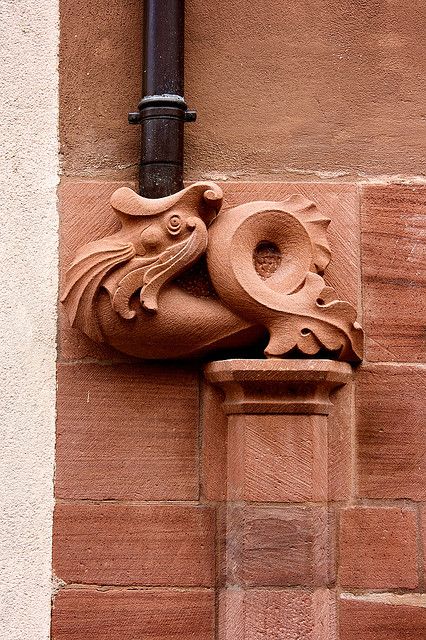#15064. Decorative Dragon Downspout: Functional Art on the Facade

The image shows an elegant architectural element that is part of a terracotta sandstone building facade. This decorative element is crafted in the form of a fantastic creature, resembling a dragon or mythical water beast, with characteristic intricate shapes and curls. The sculpture serves as a functional decorative base for a drainpipe, which is a classic example of combining practicality and aesthetics in architecture.
The mastery of stone carving is evident here: the detailing of scales, sinuous forms, and wave-like contours creates an impression of movement even in static material. The color palette of the sandstone — warm terracotta and brown shades — harmoniously blends with the overall facade of the building, creating a unified architectural ensemble.
Such decorative elements are characteristic of Neo-Gothic and Neo-Romantic architecture, where fantastic creatures and water drainage systems were given special significance. When designing the facade of a modern house, such elements can become a unique feature, giving the building individuality and historical depth. Such details emphasize attention to detail and create visual accents, turning utilitarian structural elements into works of art.